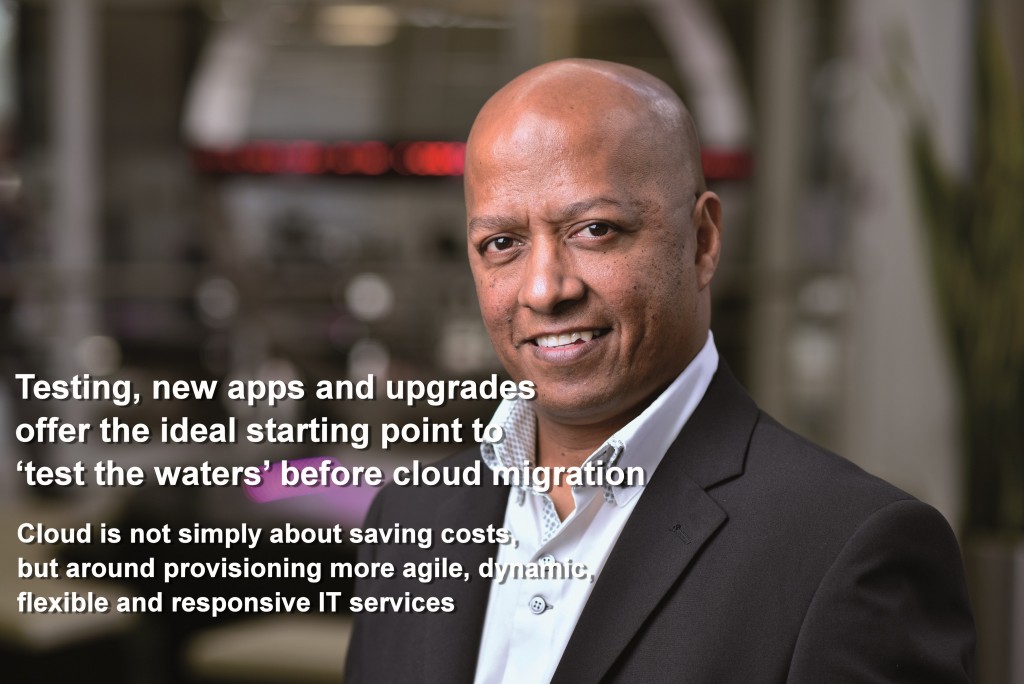Cloud is one of the most significant over-arching growth trends driving digital transformation today. Although in South Africa we are seeing some uptake of this technology, customer confidence generally remains fairly low, and local organisations are still faced with the challenge of significant investment of existing legacy infrastructure. This has led to hesitation in the market when it comes to the option of migrating to cloud-based platforms. However, cloud technology is not ‘all or nothing’, and there are many methodologies that can be taken towards adoption. These include strategic migrations, testing, new product development and upgrades.
For many South African businesses, the investment into existing infrastructure is significant, and this legacy infrastructure needs to be managed, operated and run effectively and reliably. This can make the transitioning to cloud a seemingly onerous task, with the result that many IT departments are susceptible to “Dark IT”. The question is, “Where to start?” Many businesses have embraced the need to use cloud services, yet IT departments are subjected to the continuous onslaught of being reliable with current infrastructure and systems management. How do IT departments leverage the significant benefits the cloud offers? In addition, a lack of confidence surrounded cloud initiatives can hinder adoption, as many IT departments are unsure of which projects are suitable for the cloud and which infrastructure should be maintained in-house, as well as which applications could benefit most from cloud migration.
Organisations need not make the call to move all of their core transactional systems over, but can take a more strategic approach to see where the cloud can provide benefit, without taking the risk of a wholesale cloud migration.
The need to balance the operation and maintenance of classic IT operations with dynamic solutions that utilise the cloud platforms. A bi-modal approach to IT, leveraging both in-house and cloud-based infrastructure and services, has to become the norm of today.
Simply moving old workloads into a new environment, in other words the cloud, is not always the best option. Before any existing services or solutions are migrated, it is essential to conduct a cloud readiness assessment, particularly in terms of the applications that can be safely and productively migrated across. A cloud readiness assessment can also provide a full overview of the business and all associated IT services, and facilitate the design of a roadmap for optimal cloud migration.
In addition to these methods, a third option is to take new projects, services and applications as well as upgrades to existing solutions and deliver them straight from the cloud. Since in many organisations businesses that demand agility are bypassing IT and obtaining pure cloud services externally, this method enables IT to regain some control and initiative, and also demonstrate value to the business. While new projects are being rolled out, organisations can also assess legacy applications and systems, take them through the cloud readiness assessment, and determine which can be safely migrated.
This approach offers organisations a number of benefits, not least of which is reduced risk. For example, when embarking on an upgrade, there are usually challenges that need to be ironed out which can impact productivity, production and the operations in general. The upgrade can be fully tested in a cloud environment, which stabilises the IT environment, reduces disruption to the company and enables a smoother, hitch-free project. Furthermore, with regard to new products, projects or services, cloud models mean that the business is not committed to a fixed capital expenditure in order to deliver. Since cloud can be based on a ‘pay as you use’ model, infrastructure can be added as and when necessary without significant capital outlay or lengthy procurement processes. This also improves agility, allowing organisations to roll out new services faster and respond more quickly to changing market demand. Businesses also do not need to become heavily invested in new projects, as they can be cut at any time if they are not delivering as expected. In addition, all of this can be done outside of the production environment, and will therefore not have any impact on the day-to-day operations of the business
In many instances, after conducting a cloud readiness assessment, organisations will discover that the benefits far outweigh any risks. Cloud is not simply about saving costs, but around provisioning more agile, dynamic, flexible and responsive IT services. The speed and agility with which new products can be delivered to market can become a significant competitive edge, and the lack of risk in attempting new products can help to drive innovation. If a product works, cloud IT can also scale quickly to meet growing demand. Ultimately, if the right services, applications and solutions are migrated into the cloud, organisations can leverage multiple benefits with minimal risk that will enable them to become more competitive in today’s digital marketplace.
- AJ Hartenberg is Portfolio Manager: Data Centre Services at T-Systems in South Africa

